Attorneys and Real Estate Dealers of the Boston-Edison Historic District
Clarence J. Boldt

Clarence J. Boldt was born in 1882 in Macomb County. He attended Detroit Business College, then joined Stanley B. Smith Coal Co. He stayed with the company for eleven years, eventually becoming the manager. He resigned from his position to open his own realty and insurance company, in which capacity he developed a number of large subdivisions in Detroit and in the suburbs. During World War I, Boldt took up government work, working in the airplane departments of Packard Motor Co. and Fisher Body.
Clarence J. Boldt lived at 2315 Longfellow from the 1920s through the 1940s.
Frank H. Goddard
Frank Goddard was born in 1866 in Connecticut. At the age of 16, he came to Detroit and apprenticed as a mason, working for his uncle. In 1891, he became a partner with his uncle, and then took over the business entirely after his uncle's retirement. He founded the mason contracting firm Chandler and Goddard, and, in 1909, starter F. H. Goddard Co, an general contracting firm. As a general contractor, Goddard built some of the grandest homes in the city of Detroit, including Henry Ford's home on Edison Avenue.
Frank Goddard lived at 751 W. Boston Boulevard in the 1910s.
Henry M. Kelly
Henry Kelly was born in Ottawa, IL, in 1865. He studied law and passed the bar in 1891. He stayed in Ottawa in private practice until 1923, when he successfully defended General Motors in a lawsuit. GM was so impressed with his work they asked him to represent them in Michigan; Kelly accepted their offer and moved to the Boston-Edison district of Detroit. There, he established the law firm of Kelly, Kelly, and Kelly, with his sons Harry (future governor of Michigan) and Emmett.
Henry M. Kelly lived at 2465 Chicago from the 1920s until his death in 1946.
Paul H. King

Paul King was born in Nebraska in 1879. His family moved to Minnesota and then to Michigan, where King graduated from high school and eventually studied law, entering the bar in 1904. As a young man, King served as a page in both the Minnesota House of Representatives and the Michigan Senate. He was later journal clerk in the Michigan House, assistant secretary in the Senate, and private secretary to the Secretary of State. In 1907-1908, he was the secretary of the Michigan Constitutional Convention. He later worked as the chief clerk of the legislature, and in various capacities at three different railroad companies. In 1919, he was appointed referee in bankruptcy for eastern Michigan.
Paul H. King lived at 1497 W. Boston Boulevard in the 1930s and 1940s.
Edward A. Loveley
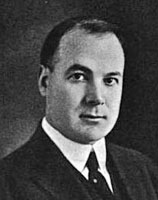
Edward Loveley was born in Springfield, Mass in 1879. He began his business career at an electrical company in Springfield, then in 1900 moved to Illinois and then Cleveland, where he began in the real estate business. In 1903, he moved to Detroit, where he continued in real estate. In 1902, he joined with Harry Stormfeltz to for the Stormfeltz-Loveley Company, of which he was vice president and treasurer. Lovely developed real estate in a broad range of areas, being involved in development companies in Grosse Pointe, Dearborn, Bloomfield, Grosse Pointe Park, and other suburbs, as well as places within the city.
Edward A. Loveley lived at 803 W. Boston Boulevard with his business partner, Harry Stormfeltz.
Anthony Maiullo
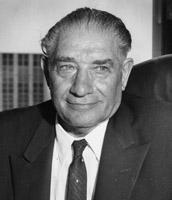
Anthony Maiullo was born in 1886 in Italy and immigrated to Detroit with his parents in 1887. He attended Detroit's Eastern High School (and was an all-state football star) and simultaneously attended night classes at Detroit College of Law. He graduated from high school in 1907 and married his childhood sweetheart, Minerva Tarquinio. He graduated from law school the following year and began his career in the firm of Brennan, Donnelly and Van de Mark as an office boy.
In his early career, Maiullo taught English to immigrants, served at the attorney for St. Clair Heights during its annexation to Detroit, and hammered out a solution to the metropolitan Water Board problem. He made history in in the 1930s as the successful defense attorney for several men accused of murder in the "Buckley Case." The court procedures of this case were the first in the area to be broadcast on the radio. In 1960, he was appointed to the Civil Service Commission, serving for three years.
Maiullo was made a Chevalier of the Italian Crown while serving the Italian Consulate as legal counsel from 1914 to 1941, and the Italian Republic honored him with the title of "Commendatore" in 1967 for his "dedication, remarkable achievements, cooperation and contributions to his own community as well."
Anthony Maiullo had a long history in Boston-Edison, living at 151 Edison in 1930, at 858 W. Boston from 1933-1940, and at 52 Chicago from 1940 until his death in 1976. In addition, he donated the two lots at the corner of Chicago and Woodward to the city in the 1960s, naming them "Minerva Maiullo Parks" in honor of his wife.
Axel E. Michelson
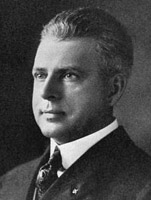
Axel Michelson was born in Manistee in 1878, the son of Nels and Margrethe Michelson. He graduated from the Michigan School of Mines (no Michigan Tech) in 1900, after which he worked as a mining engineer for several years. In 1906, he joined the Grayling Lumber Company, and two years later joined his father's firm, N. Michelson Lumber, as general manager. In 1916, Michelson moved to Detroit and switched to real estate, joining the Michelson Land & Home Company as treasurer; he later started his own firm, the Michelson Building Company. He married Elizabeth Marie Finn in 1916; the couple had two children, Jean and John.
Axel E. Michelson lived at 943 West Boston (near his father Nels) in the 1920s and 1930s.
Nels Michelson
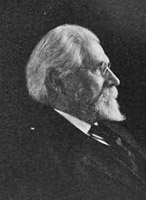
Nels Michelson was born in 1840 in Denmark. He worked as a farmhand until 1864, when he joined the army and was taken as a POW. At the conclusion of the war, Michelson was released, and in 1866 emigrated to America, joining his brothers in Wisconsin. He then moved to Manistee, working there as a lumberman. By 1869, he had gone into business himself, buying small tracts of land and logging them. In 1870, Michelson married Margrethe Jenson; the couple had six children: Karen, Frank, Axel, Carl, Olaf, and Frederick. His business grew, and in 1878 Michelson moved to Grayling, later building a mill and buying more acreage until he owned 50,000 acres. In 1906, he organized the Grayling Lumber Company, and in 1912 turned to real estate in the Detroit area, organizing Michelson Land & Home.
In 1917, Nels Michelson retired and built a home at 918 West Boston (near his son Axel) and continued living there until the 1920s. Both Leonard A. Young and Berry Gordy, Jr.later lived in the same house.
Eugene Sloman
Eugene Sloman was born in Detroit in 1866. As a young man, he worked for a time for his brother's firm in Nebraska, which manufactured leather goods and saddles. In 1886, he returned to Detroit and entered the real estate business. He was chairman of the St Clair Heights Syndicate, an organization that platted the St. Clair Heights subdivision. In 1904, Sloman and some associates formed the Seamless Steel Bathtub Company, of which Sloman was vice-president.
Eugene Sloman lined at 155 Chicago Boulevard in the 1920s.
Edward W. Voigt
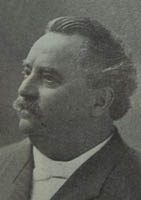
Edward Voigt was born in Germany in 1844. He moved with his father to America in 1854, living briefly in Toledo, Chicago, and Milwaukee, before settling in Madison Wisconsin. Edward Voigt's father opened a small brewery in Madison, and Edward attended the local schools as well as the University of Wisconsin. In 1864, Voigt's father closed the brewery and moved to Detroit, there to establish another brewery. Edward, meanwhile, sought his fortune in California, but eventually moved to Detroit to work for his father.
In 1871, Edward Voigt's father returned to Germany, and Edward took over the management of the brewery. Under his leadership, sales increased, and he eventually bought the business. With his profits, Voigt invested in a number of ventures. He was one of the founders of the Edison Illuminating Company of Detroit in 1886 (where he hired Henry Ford). He also built the NorthWestern Electric Railway on Grand River Road, was president of the bridge company that built the bridge between Grosse Ile and Wyandotte in 1912, and was president of the Miles Theater Company.
In particular, Voigt owned about 150 acres of land on Woodward Avenue, four miles from the city's center. He operated the land as a farm, but as the city expanded, Voigt sensed an opportunity. In the 1890s, he developed the property into the Voigt Park Subdivision, laying out Boston Boulevard, Chicago Boulevard, Longfellow and Edison from Woodward to Hamilton, as well as the surrounding streets of Atkinson, Calvert, and Glynn Court. In addition, he donated a large parcel of land, now known as Voigt Park, to the city of Detroit.

